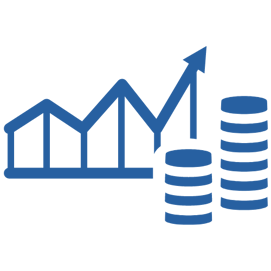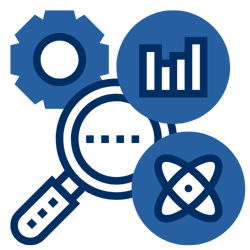Four Price Forecasting Techniques to Improve Accuracy
Predicting what the price of your product or service will be in the future requires complex analysis and consistent monitoring to plan revenues accurately. It is more important than ever to consider outside factors such as market volatility, supply chain delays or issues, and overall sentiment. Getting this process wrong will have a ripple effect across the entire organization, and it’s a process that can’t successfully be accomplished in spreadsheets. According to a report by InsightSquared that surveyed 400 B2B enterprise organizations, only 15% of revenue leaders are very satisfied with their forecast process, with 90% of the participants reporting that predicted forecasts were at least 6% off of the actual results. This means accurate forecasting is still an area that can become a competitive advantage when done correctly and is a known area of concern for revenue leaders. In this article, we will explore the four separate areas of analysis that all need to be considered to create an in-depth and accurate price forecast.
and consistent monitoring to plan revenues accurately. It is more important than ever to consider outside factors such as market volatility, supply chain delays or issues, and overall sentiment. Getting this process wrong will have a ripple effect across the entire organization, and it’s a process that can’t successfully be accomplished in spreadsheets. According to a report by InsightSquared that surveyed 400 B2B enterprise organizations, only 15% of revenue leaders are very satisfied with their forecast process, with 90% of the participants reporting that predicted forecasts were at least 6% off of the actual results. This means accurate forecasting is still an area that can become a competitive advantage when done correctly and is a known area of concern for revenue leaders. In this article, we will explore the four separate areas of analysis that all need to be considered to create an in-depth and accurate price forecast.
Technical Analysis
The technical analysis will allow you to understand the past and begin your forecasting process. This analysis itself has many limitations in creating a full view of the future of prices, so it needs to be considered in conjunction with the remaining types of assessments discussed in this article to create the most accurate forecast possible. This analysis of historical data will give you insights into the potential future performance and allow your accuracy rates to improve. The technical analysis includes reviewing:
analysis itself has many limitations in creating a full view of the future of prices, so it needs to be considered in conjunction with the remaining types of assessments discussed in this article to create the most accurate forecast possible. This analysis of historical data will give you insights into the potential future performance and allow your accuracy rates to improve. The technical analysis includes reviewing:
- Historical Prices
- Volume Data
- Past Patterns, Trends, & Indicators
Fundamental Analysis
As it sounds in the name, this analysis is a necessary area of focus to create a well-rounded basis for future forecasting. This is where you will take the time to identify supply and demand dynamics, industry trends, and market conditions. You’ll need to review and access data sources to provide:
- Production Level Changes
- Material and Labor Costs
- Consumer Behavior Patterns
- Seasonality
- Government Policy Changes
Quantitative Models
With the technical and fundamental analysis completed, you can move on to quantitative modeling. The different types of modeling provide an organized approach to price forecasting, but just as any one area it will have limitations, and any modeling will need to be conducted in conjunction with the sentiment analysis. Some of the more common quantitative methods for price forecasting include:
- Regression Analysis
- Time Series Analysis
- Moving Averages
- Machine Learning Algorithms
Sentiment Analysis
Sentiment analysis can be a large determining factor for understanding potential prices. Market sentiment is also an area that can drastically change very quickly – if that happens, it’s essential to have the tools in place to capture that change & have the rest of your analysis completed to be able to re-forecast should sentiment become more negative or positive. The sentiment analysis should be considered equally along with the previous methods and a full view of consumer sentiment would include:
drastically change very quickly – if that happens, it’s essential to have the tools in place to capture that change & have the rest of your analysis completed to be able to re-forecast should sentiment become more negative or positive. The sentiment analysis should be considered equally along with the previous methods and a full view of consumer sentiment would include:
- Social Media Trends
- Online Reviews & Ratings
- Competitive Analysis
In Conclusion
Creating an accurate price forecast requires in-depth research and analysis, the kind of analysis that can't be handled successfully manually. Using a connected planning tool, you can link your people, your technologies, (learn how to pick the right technology for you here), and all your different plans to provide the most complete view and make the best estimates. In the study from InsightSquared that surveyed revenue leaders, more than 80% of respondents reported using two or more tools to create forecasts, and 55% are using more than three different tools. If you aren't connecting the different tools into one powerful view, you can expect more human errors, more variations, and overall less accurate outcomes. Having a full view of your data and knowing when to increase or decrease prices is a critical part of revenue forecasting – and even 1-2% point changes can have a huge impact on your bottom line.
Resources:


